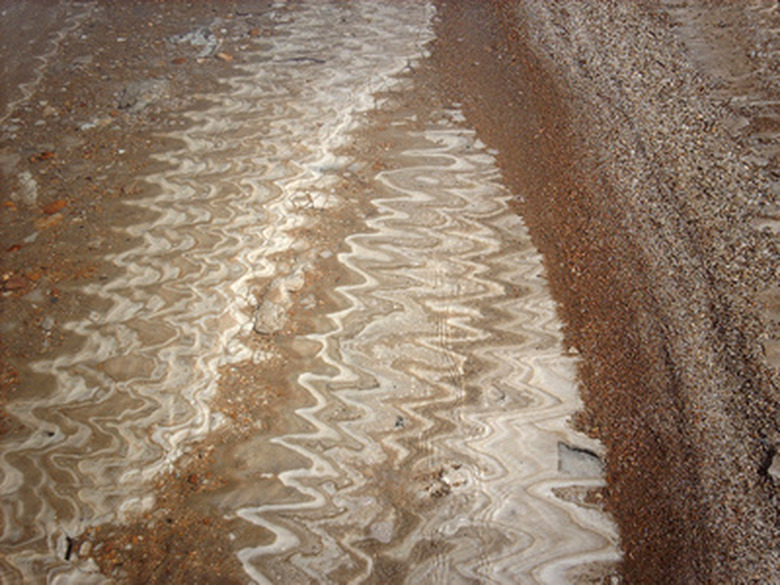How To Make Liquid Calcium Chloride
Several manufacturers market "Liquid Calcium Chloride" as a deicing pretreatment. Pretreating ice with a solution of calcium chloride before applying rock salt enhances the performance of the salt by allowing the salt crystals to penetrate into the ice. Calcium chloride also allows deicing in lower temperatures than rock salt alone. According to two manufacturers' material safety data sheets, liquid calcium chloride contains 20 to 45 percent calcium chloride by weight in water. Taking the middle of this range, 33 percent, as a "target" composition, this means that 100 mL of the solution contains about 33 g calcium chloride, or the calcium chloride concentration is 0.33 g/mL. Converting these units to more conventional English measurements, this translates to about 1200 g per gallon, 42 oz. per gallon or 2.6 lbs. per gallon.
Step 1
Measure 42 oz. of anhydrous calcium chloride pellets into a plastic bowl and transfer the pellets to an empty 1-gallon jug using a funnel. If necessary, the pellets can be weighed in two or more portions and added separately. Be certain to allow for the weight of the empty bowl. Thus, if the empty bowl weighs 3 oz., then add the calcium chloride pellets until the balance reads 42 + 3 = 45 oz.
Step 2
Fill the plastic container approximately half full with tap water being careful not to spill or splash the contents. Swirl the container in a circular motion until the calcium chloride pellets have dissolved completely. This may require several minutes of swirling.
Step 3
Fill the gallon container to its full 1-gallon capacity, cap tightly and, while holding one hand over the cap, invert the jug three times to mix the contents.
Step 4
Label clearly the outside of the jug with indelible marker to avoid poisoning accidents.
Things Needed
- 3 lbs. anhydrous calcium chloride pellets
- 1 plastic gallon container (empty)
- Scale or balance capable of measuring to 1 oz.
- Funnel
- Safety glasses
- Rubber gloves
Warning
The use of protective eyewear and rubber gloves is strongly recommended.
If the plastic container shows a previously existing label, the preferred safe storage method is to spray paint over the label or soak the label in water until it is removed completely. This step is especially recommended if the container was previously used for food storage.
Cite This Article
MLA
Brubaker, Jack. "How To Make Liquid Calcium Chloride" sciencing.com, https://www.sciencing.com/make-liquid-calcium-chloride-6646320/. 24 April 2017.
APA
Brubaker, Jack. (2017, April 24). How To Make Liquid Calcium Chloride. sciencing.com. Retrieved from https://www.sciencing.com/make-liquid-calcium-chloride-6646320/
Chicago
Brubaker, Jack. How To Make Liquid Calcium Chloride last modified March 24, 2022. https://www.sciencing.com/make-liquid-calcium-chloride-6646320/
